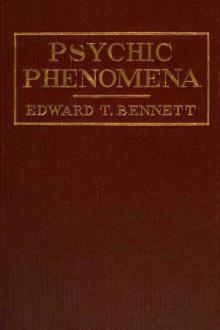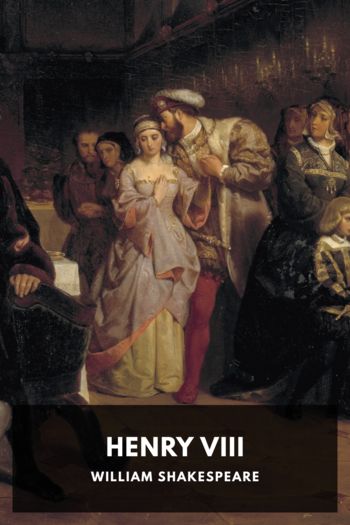Don Quixote by Miguel de Cervantes Saavedra (electric book reader TXT) 📕

Description
Don Quixote is a novel that doesn’t need much introduction. Not only is it widely considered the greatest Spanish literary work of all time, one of the greatest literary works in history, and a cornerstone of the Western literary canon, it’s also considered one of the first—if not the first—modern novels.
This Standard Ebooks edition is believed to be the first ebook edition of Don Quixote to feature a full transcription of translator John Ormsby’s nearly 1,000 footnotes. Ormsby as an annotator deftly explains obscure passages, gives background on the life and times of 1600s Spain, references decisions from other contemporary translators, and doesn’t hold back from sharing his views on the genius—and flaws—of Cervantes’ greatest work.
The story is of the eponymous Don Quixote, a country noble who, in his old age, reads too many chivalric romances and goes mad. After convincing his grubby servant, Sancho Panza, to join him as his squire, he embarks on an absurd and comic quest to do good and right wrongs.
Today Don Quixote’s two volumes are published as a single work, but their publication came ten years apart. Cervantes saw great success with the publication of his first volume, and appeared to have little desire to write a second volume until a different author wrote a spurious, inferior sequel. This kicked Cervantes into gear and he wrote volume two, a more serious and philosophical volume than the largely comic first volume.
Despite being written in 1605 and translated in 1885, Don Quixote contains a surprising amount of slapstick laughs—even for the modern reader—and narrative devices still seen in today’s fiction, including meta-narratives, frame narratives, and metafiction. Many scenes (like Quixote’s attack on the windmills) and characters (like Sancho Panza and Lothario) are so famous that they’re ingrained in our collective culture.
Read free book «Don Quixote by Miguel de Cervantes Saavedra (electric book reader TXT) 📕» - read online or download for free at americanlibrarybooks.com
- Author: Miguel de Cervantes Saavedra
Read book online «Don Quixote by Miguel de Cervantes Saavedra (electric book reader TXT) 📕». Author - Miguel de Cervantes Saavedra
Instead of azotes (whips) Clemencín suggests azores (hawks), and refers to Chapter XXX Part II, where a hawk in hand is especially mentioned as the usual accompaniment of a noble lady on horseback. ↩
Alcaná, a marketplace in Toledo in the neighborhood of the cathedral. ↩
I.e. Hebrew. ↩
J. A. Condé suggested that Ben Engeli—“son of the stag”—is the Arabic equivalent of the name “Cervantes,” the root of which he assumed to be ciervo. Cervantes may, of course, have intended what Conde attributes to him, but the name in reality has nothing to do with ciervo, and comes from Servando. (See here.) ↩
Panza = “paunch:” Zancas = “shanks;” but in spite of what Cervantes says, we hear no more of Sancho’s long shanks, for which the reader will be grateful. It would have been difficult to realize a long-legged Sancho. ↩
A curious instance of the carelessness with which Cervantes wrote and corrected, if, indeed, he corrected at all: of course he meant the opposite of what he said—that truth was the mother of history. ↩
The Santa Hermandad, a tribunal established in the thirteenth century, but revived in the reign of Ferdinand and Isabella, with summary jurisdiction over offenders against life and property on the highways and outside of the municipal boundaries. ↩
Omecillo or hornecillo was an old form of the word homecidio, but in popular parlance it meant the fine imposed in default of appearance to answer a charge of assault and battery. ↩
Fierabras, i.e. Fier à Bras = “Arm-strong,” a giant in Nicolás de Piamonte’s history of Charlemagne and the Peers. ↩
In the original, tres azumbres. ↩
Mambrino, a Moorish king in the Orlando of Boiardo, whose enchanted helmet was won by Rinaldo. It was Dardinel, however, not Sacripante, to whom it cost so dear. (V. Ariosto, c. xviii, st. 151.) ↩
Albraca, a stronghold of Galafron, King of Cathay and father of Angelica. The siege is one of the incidents in the Orlando of Boiardo. ↩
Literally, take knight-errantry off its hinges. ↩
“Waterwheel”—noria—a machine used for irrigation in Spain, by which the water is raised in pots or buckets attached to the circumference of a large wheel. ↩
The eulogy of the golden age is one of the loci classici of Don Quixote quoted in every Spanish anthology; the reader, however, must not judge of it by translation, which can not give the stately roll and flow of the original Castilian. ↩
Water is almost worshipped in thirsty Spain, and many a complimentary epithet bestowed upon it that sounds odd under moister skies: agua muy rica—“very rich water”—is a common encomium from a Spaniard after a hearty pull at the alcarraza. ↩
Clemencín and Hartzenbusch, why I know not, object to se decoraban the reading of the original editions, and the latter substitutes se declaraban. I venture to think the original reading admits of the interpretation I have given. ↩
In the Spanish, rabel, a small three-stringed lute of Moorish origin. ↩
Antonio’s ballad is in imitation of a species of popular poetry that occupies nearly as large a space as the romantic and historical ballads in the old romanceros. These gay, naive, simple lays of peasant life and love are as thoroughly national and peculiar to Spain as the historical ballads themselves, and in every way present a striking contrast to the artificial pastoral sonnets and canciones of Italian importation. The imitation of this kind of poetry was a favorite pastime with the poets of the Spanish Augustan age, and strange to say the poet who showed the lightest touch and brightest fancy in these compositions, and caught most happily the simplicity and freshness of the originals, was Góngora, whose name is generally associated with poetry the exact opposite of this in every particular. Cervantes apparently valued himself more upon his sonnets and artificial verses; a preference regretted, I imagine, by most of his readers. This ballad has been hardly treated by the translators. The language and measures used by Shelton and Jervas are about as well adapted to represent a Spanish popular lyric as a dray-horse to draw a pony-chaise. The measure of the original is the ordinary ballad measure, an eight-syllable trochaic, with the assonant rhyme in the second and fourth lines. The latter peculiarity I have made no attempt to imitate here, but examples of it will be found farther on. ↩
Coyundas, the cords or thongs by which the horns of the draught oxen are bound to the yoke. ↩
“Pulse”—garbanzos, or chickpeas, one of the invariable constituents of the olla or puchero, and therefore an important crop in Spain. ↩
“Plays”—autos, religious allegorical dramas. ↩
Mas viejo que sarna—(Proverb 250) “older than itch”—is a very old popular phrase. Don Quixote, either not knowing it or else not recognizing it in the form in which Pedro puts it, supposes him to mean Sarah the wife of Abraham. Though Cervantes tries to observe dramatic propriety by making Pedro blunder, in the end he puts into his mouth language as fine





Comments (0)